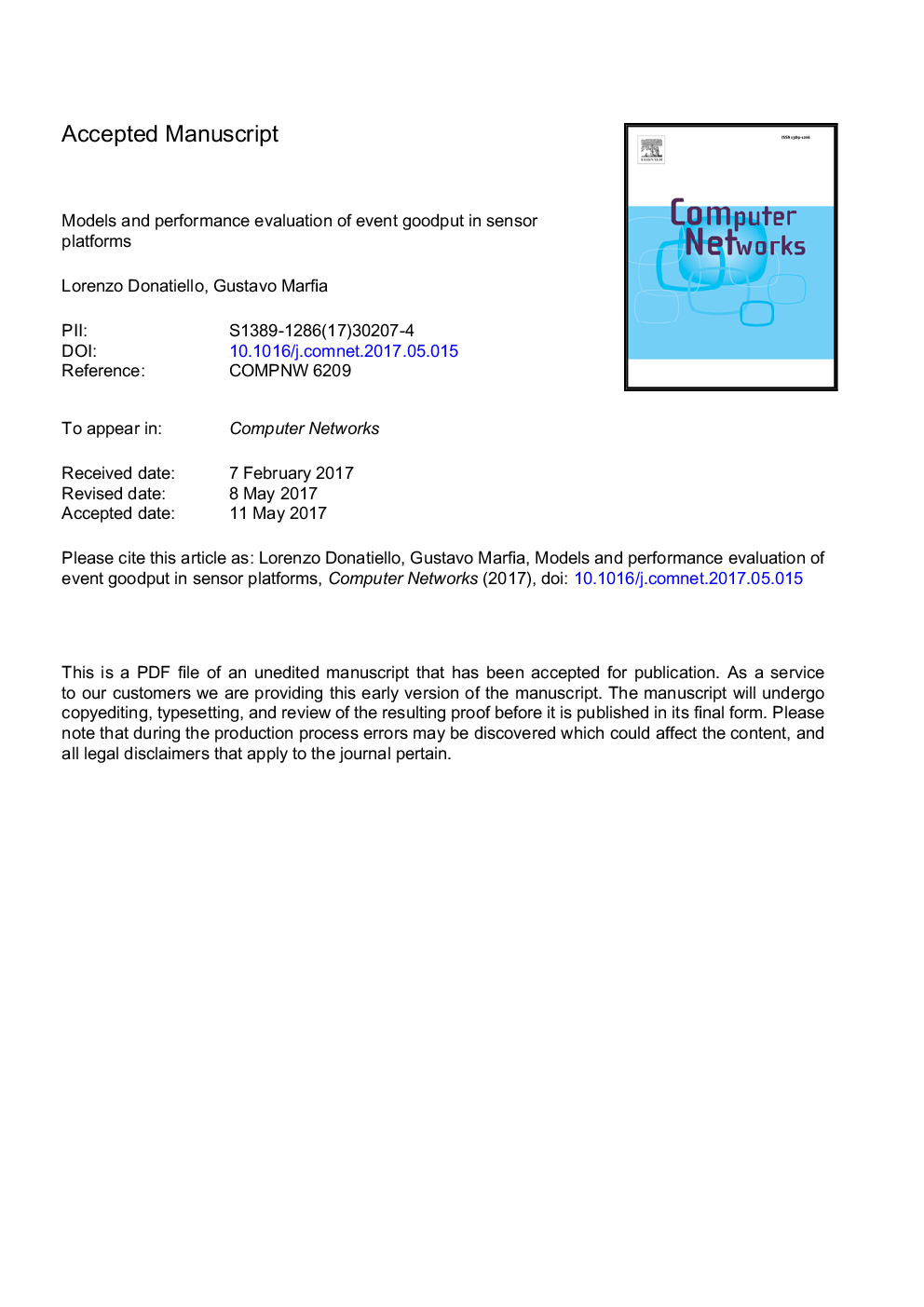| Article ID | Journal | Published Year | Pages | File Type |
|---|---|---|---|---|
| 4954711 | Computer Networks | 2017 | 55 Pages |
Abstract
Despite the introduction of novel energy harvesting technologies, the lifetime of a sensor platform remains one of its most important performance metrics. Performance, however, may also be assessed in terms of the fraction of events which may successfully/unsuccessfully be detected and reported within a time interval of interest, i.e., mission time. Such a performance metric, here termed event goodput, is key for all random event-driven networks, ranging from surveillance and intrusion detection applications operating in time critical scenarios, to mobile and wearable crowd-sensed ecosystems, where mobile sensors are utilized by a number of different applications. When reporting the appearance of a series of possible, but unknown, phenomena, predicting which event goodput may be obtained during the planned mission time is challenging. In this paper, we address this issue by reducing the network-wide problem to the analysis of the performance of individual nodes, in terms of their capability of handling given fractions of event arrivals under fixed probabilistic guarantees. This is obtained as a function of mission time, event arrival and energy consumption models of different, detection and communication schemes, all realistic.
Related Topics
Physical Sciences and Engineering
Computer Science
Computer Networks and Communications
Authors
Lorenzo Donatiello, Gustavo Marfia,
